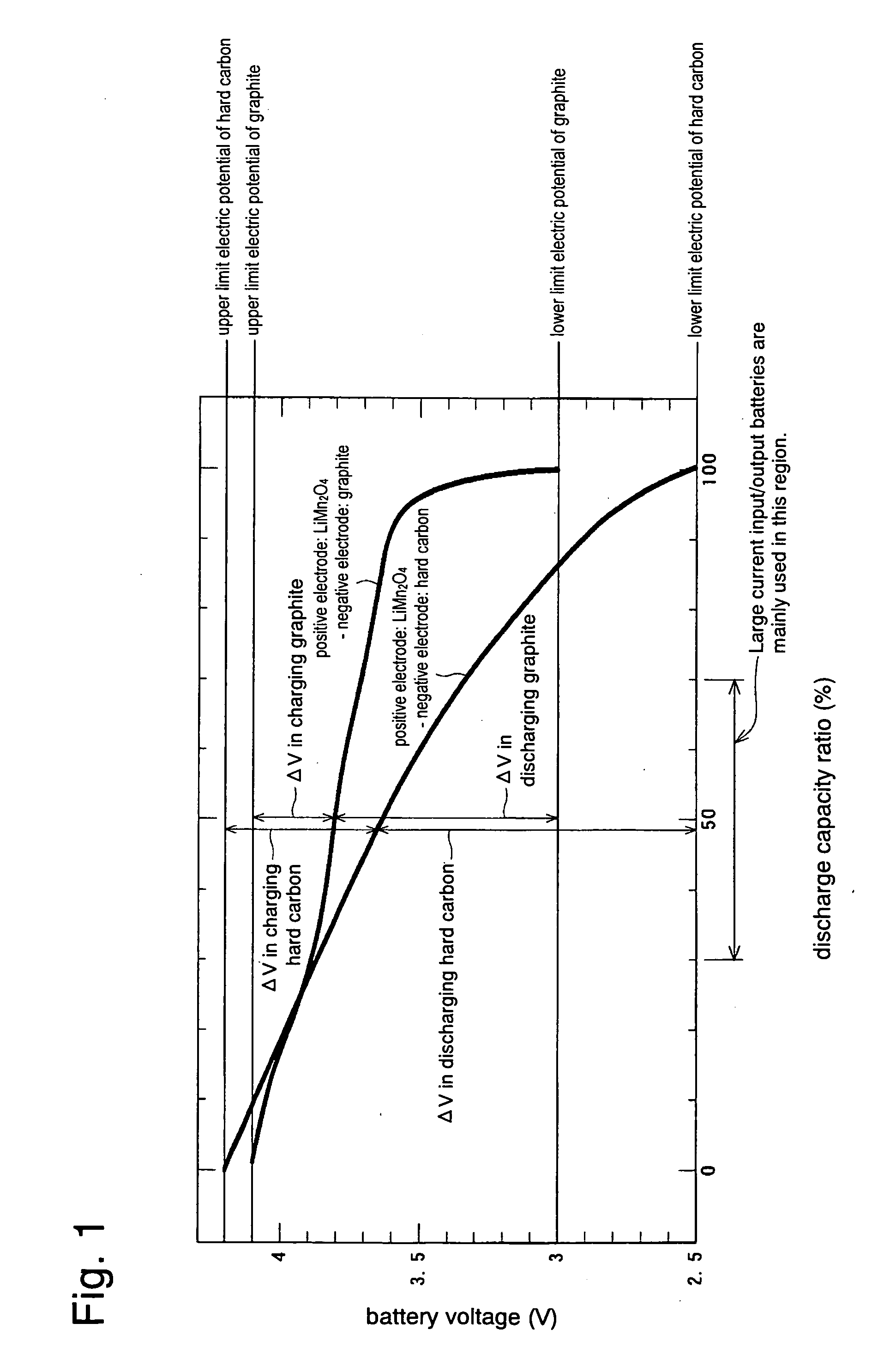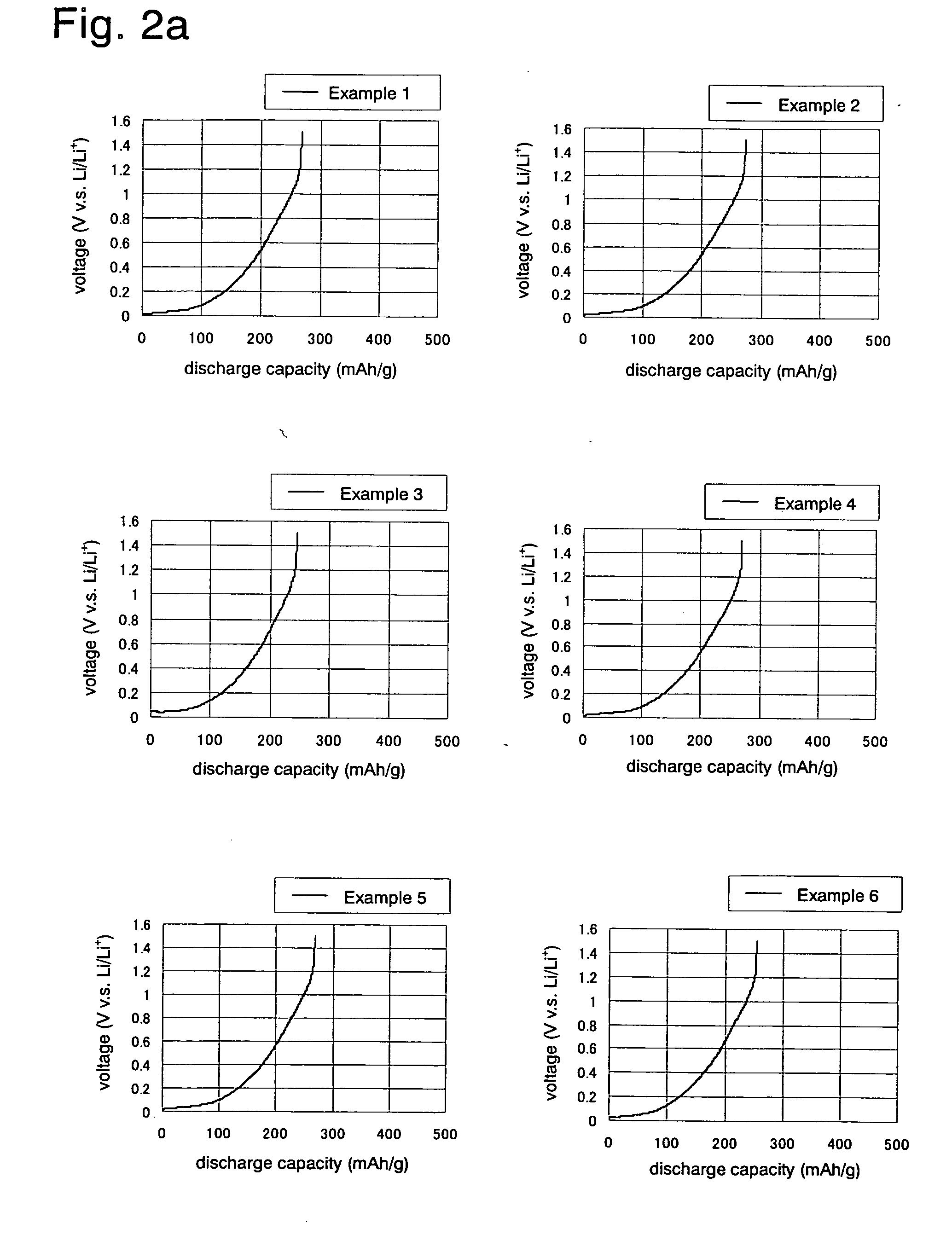Negative Electrode Material for Non-Aqueous Electrolyte Secondary Battery, Process for Producing the Same, Negative Electrode, and Non-Aqueous Electrolyte Secondary Battery
a negative electrode technology, applied in the direction of non-metal conductors, cell components, sustainable manufacturing/processing, etc., can solve the problems of increasing irreversible capacity or cycle performance, negative electrode material having the necessary characteristics for a large current input/output non-aqueous electrolyte secondary battery such as secondary batteries for hevs has not been studied, and the irreversible capacity is increased
- Summary
- Abstract
- Description
- Claims
- Application Information
AI Technical Summary
Benefits of technology
Problems solved by technology
Method used
Image
Examples
example 1
[0088]To a pressure-resistant vessel having an inner volume of 300 liters equipped with stirring blades and an exit nozzle, 70 kg of a petroleum pitch having a softening point of 205° C. and an H / C atomic ratio of 0.65, and 30 kg of naphthalene were fed, and the mixture was heated at 190° C. and melt-mixed. Then the resulting mixture was cooled to a temperature not lower than 80° C. and not higher than 90° C., and the inside of the pressure-resistant vessel was pressurized with nitrogen gas to extrude the contents therein from the exit nozzle to obtain string-like shaped material having a diameter of about 500 μm. Then this string-like shaped material was pulverized so as to attain a ratio (L / D) of the diameter (D) to the length (L) of about 1.5, and the pulverized material was added to an aqueous solution dissolving 0.53% by weight of polyvinyl alcohol (degree of saponification: 88%) heated at 93° C. The material was dispersed by stirring and the resulting mixture was cooled to obt...
example 2
[0091]A negative electrode material (carbonaceous material) was prepared in the same manner as in Example 1, except that the oxidation of the porous pitch spheres was carried out by heating the pitch to 223° C. to obtain an oxidized pitch having an oxygen content of 9% by weight, and that the carbonization temperature of the oxidized pitch having an oxygen content of 9% by weight was 1200° C.
example 3
[0092]A negative electrode material (carbonaceous material) was prepared in the same manner as in Example 2 except that the carbonization temperature of the porous oxidized pitch spheres was 1300° C.
PUM
 Login to View More
Login to View More Abstract
Description
Claims
Application Information
 Login to View More
Login to View More - R&D
- Intellectual Property
- Life Sciences
- Materials
- Tech Scout
- Unparalleled Data Quality
- Higher Quality Content
- 60% Fewer Hallucinations
Browse by: Latest US Patents, China's latest patents, Technical Efficacy Thesaurus, Application Domain, Technology Topic, Popular Technical Reports.
© 2025 PatSnap. All rights reserved.Legal|Privacy policy|Modern Slavery Act Transparency Statement|Sitemap|About US| Contact US: help@patsnap.com



